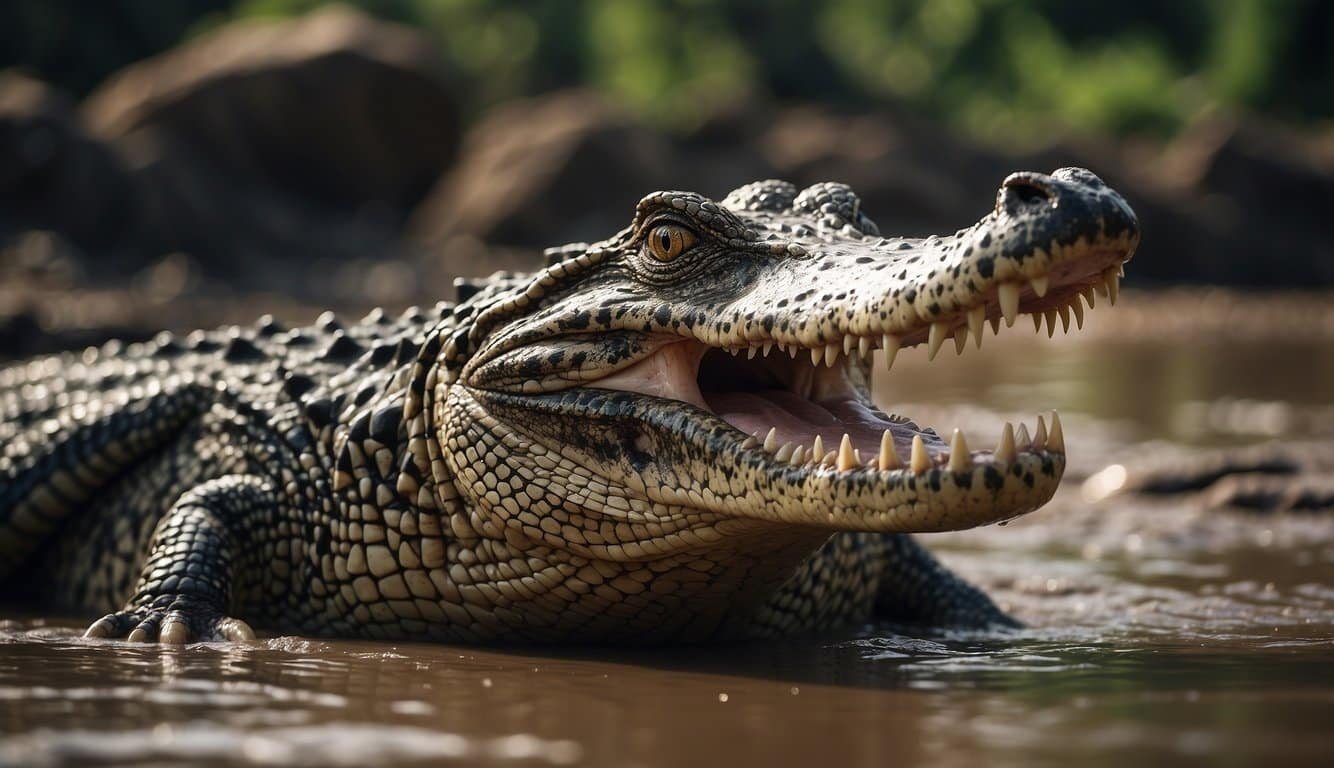Crocodile Overview
Crocodiles are ancient reptiles that have survived for millions of years. They are known for their impressive predatory skills, armored skin, and fascinating behavior.
Species and Distribution
Crocodiles belong to the order Crocodylia, which includes true crocodiles, alligators, caimans, and gharials. They are widely distributed across the tropical regions of Africa, Asia, the Americas, and Australia. The true crocodiles belong to the Crocodylus genus, with species like the Saltwater Crocodile, found in Asian and Pacific areas, and the Nile Crocodile, native to freshwater habitats in Africa. Details on the conservation status of Saltwater Crocodiles in Orissa can be found in the Status of the saltwater crocodile in Orissa: An overview.
- True Crocodiles: Crocodylus genus
- Alligators & Caimans: Alligatoridae family
- Gharials: Gavialidae family
These creatures have adapted to various environments, from rivers and lakes to estuaries and mangrove swamps.
Physical Characteristics
Crocodiles are known for their tough, scale-covered skin and muscular tails. Their physical adaptations are a testament to their evolutionary success. Characteristics such as a powerful jaw, conical teeth, and an exceptional bite force enable crocodiles to catch and hold onto their prey with ease. The largest species, the Saltwater Crocodile, can grow up to 23 feet in length. Crocodiles are carnivorous and have a diet that typically includes fish, birds, mammals, and occasionally smaller crocodiles. Insights into the biology of the Nile Crocodile can be accessed through The Nile Crocodile.
- Body Armor: Bony scales called scutes
- Size: Up to 23 feet (Saltwater Crocodile)
- Diet: Carnivorous
Their streamlined bodies and webbed feet make them excellent swimmers, a trait that is essential for their survival in aquatic habitats.
Habitat and Behavior

Crocodiles are fascinating creatures with intricate lives that are deeply intertwined with their habitats. They are found in a variety of water bodies, from rivers and lakes to swamps and brackish waters, and their behavior is closely connected to these environments.
Diet and Hunting Techniques
Crocodiles are opportunistic predators with a diet primarily consisting of fish, birds, and small mammals. They have crafted expert hunting techniques that allow them to thrive in their aqueous realms. Adults often exhibit a behavior known as the “death roll” to subdue larger prey, a tactic that showcases their raw power and agility. Hatchlings start their lives by feeding on small insects and crustaceans, gradually moving on to larger prey as they grow. Studies indicate that they may select their resting sites based on the availability and type of prey they are targeting.
Social Structure and Reproduction
The social structure of crocodiles is complex and varies between species. During the breeding season, males establish and defend territories and may engage in vocalizations as part of their mating rituals. Crocodiles demonstrate remarkable care in nest building; females often construct nests on riverbanks, carefully managing the eggs through the incubation period. Temperature within the nest can determine the sex of the hatchlings. Once the eggs hatch, some species exhibit parental care behaviors, with the mother transporting her young to the water and protecting them from potential threats. Reproduction and hatchling survival are closely tied to their habitats, as the conditions of the water and surrounding areas significantly impact their success.
Conservation and Human Interaction

Crocodile conservation efforts are crucial as some species have been classified as threatened or endangered by the International Union for Conservation of Nature (IUCN). Protecting crocodiles from extinction is not just about preserving biodiversity but also about maintaining the balance in their natural ecosystems.
Human interactions with crocodiles have historically been contentious. In various countries, these interactions range from reverence to fear, often leading to conflicts. Crocodile attacks on humans can be a serious issue, particularly where crocodiles and human populations overlap, and can negatively impact conservation efforts.
Strategies for reducing negative encounters include community education and the development of crocodile management plans. For instance, efforts in managing human-crocodile conflicts in Zimbabwe might include creating awareness about crocodile behavior and securing areas where attacks are frequent.
On the flip side, crocodiles have economic value. Their leather is a high-demand luxury material, which has led to regulated farming in captivity. Captive breeding can aid conservation by reducing the pressure on wild populations and funding conservation initiatives, but it also raises ethical questions.
The idea of crocodiles as pets is highly discouraged due to their specific needs and potential dangers. They are wild animals that require specialized care and do not adapt well to life in a human household.
Conservation initiatives must strike a balance between protecting crocodile populations and addressing human concerns. Whether it’s through supporting habitat protection or fostering positive human-crocodile relations, every action counts toward ensuring these ancient reptiles continue to thrive in the wild. For more information on crocodile conservation and the challenges they face, readers can explore the study on human-crocodile interactions in Uganda or research regarding apex predator conservation in Colombia.

